Multispectral images
Introduction
In this tutorial, you will learn how to import multispectral images to Supervisely using Python SDK and get the advantage of the grouped view in the labeling interface, which allows you to synchronize the view, zooming, panning, and labeling of images in one group.
You will learn how to:
For the advanced level, you can use supervisely annotation JSON format to download and upload projects with multispectral images.
How to debug this tutorial
Step 1. Prepare ~/supervisely.env file with credentials. Learn more here.
Step 2. Clone the repository with source code and demo data and create a Virtual Environment.
Step 3. Open the repository directory in Visual Studio Code.
Step 4. Change the Team ID and Workspace ID in the main.py file by copying the ID from the context menu.
Step 5. Start debugging src/main.py.
Import libraries
Enter your Team ID and Workspace ID
Init API client
Create a new project and dataset
Set multispectral settings for the project
To enable grouping of images, including view, zooming, panning and labeling, you need to set multispectral settings for the project. You can do it with just one line of code:
And now we're ready to upload images.
How to upload multispectral images
In this tutorial, we'll be using the api.image.upload_multispectral method to upload images to Supervisely.
dataset_id
int
ID of the dataset to upload
image_name
str
Name of the image will be used as name of the images group
channels
Optional[List[np.ndarray]] = None
List of channels as 2d numpy arrays.
rgb_images
Optional[List[str]] = None
List of paths to RGB images.
So, the method uploads images (which can be passed as channels or RGB images) to Supervisely and returns a list of ImageInfo objects. RGB images as paths or channels as NumPy arrays can be passed to the method or both at the same time. The result will be a group of images in both cases.
Upload an image as channels
Input: 1 RGB image in PNG format.
Output: 3 images in a group with the name demo1.png in Supervisely.\
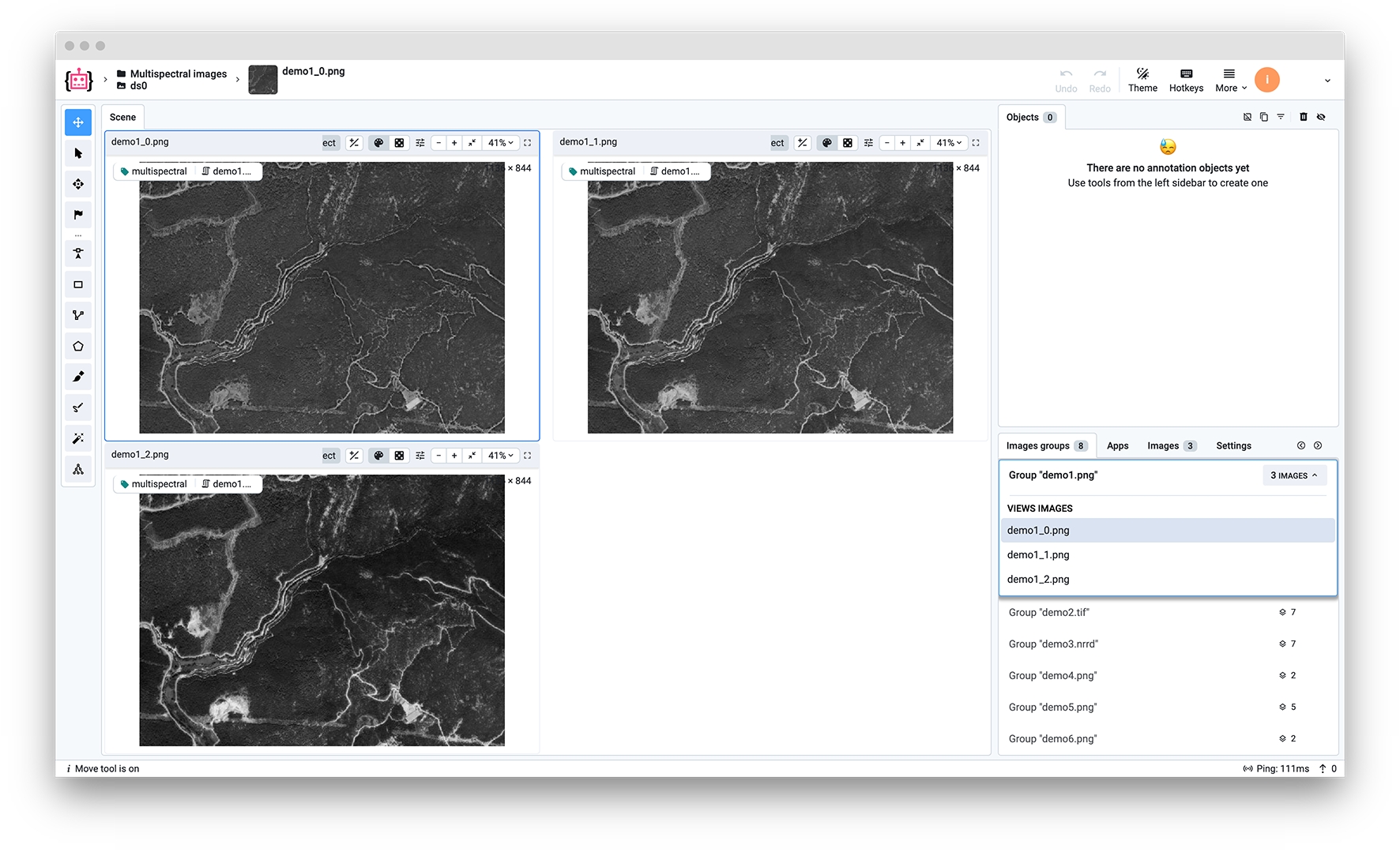
We'll do this operation for other cases too, so let's take a closer look at the code:
The
image_namewill be used as a group name in the labeling interface and it can be any string.Then we read the image from the disk using OpenCV.
Now we're splitting the image into channels, and preparing a list of channels as NumPy arrays.
Finally, we upload the channels to Supervisely using the
api.image.upload_multispectralmethod.The method returns a list of
ImageInfoobjects, which contain information about the uploaded images. Learn more aboutImageInfohere.
So, those are the steps we'll be doing for all the other cases.
Upload a multichannel tiff image as channels
Input: 1 multichannel tiff image.
Output: 7 images in a group with the name demo2.tif in Supervisely.\
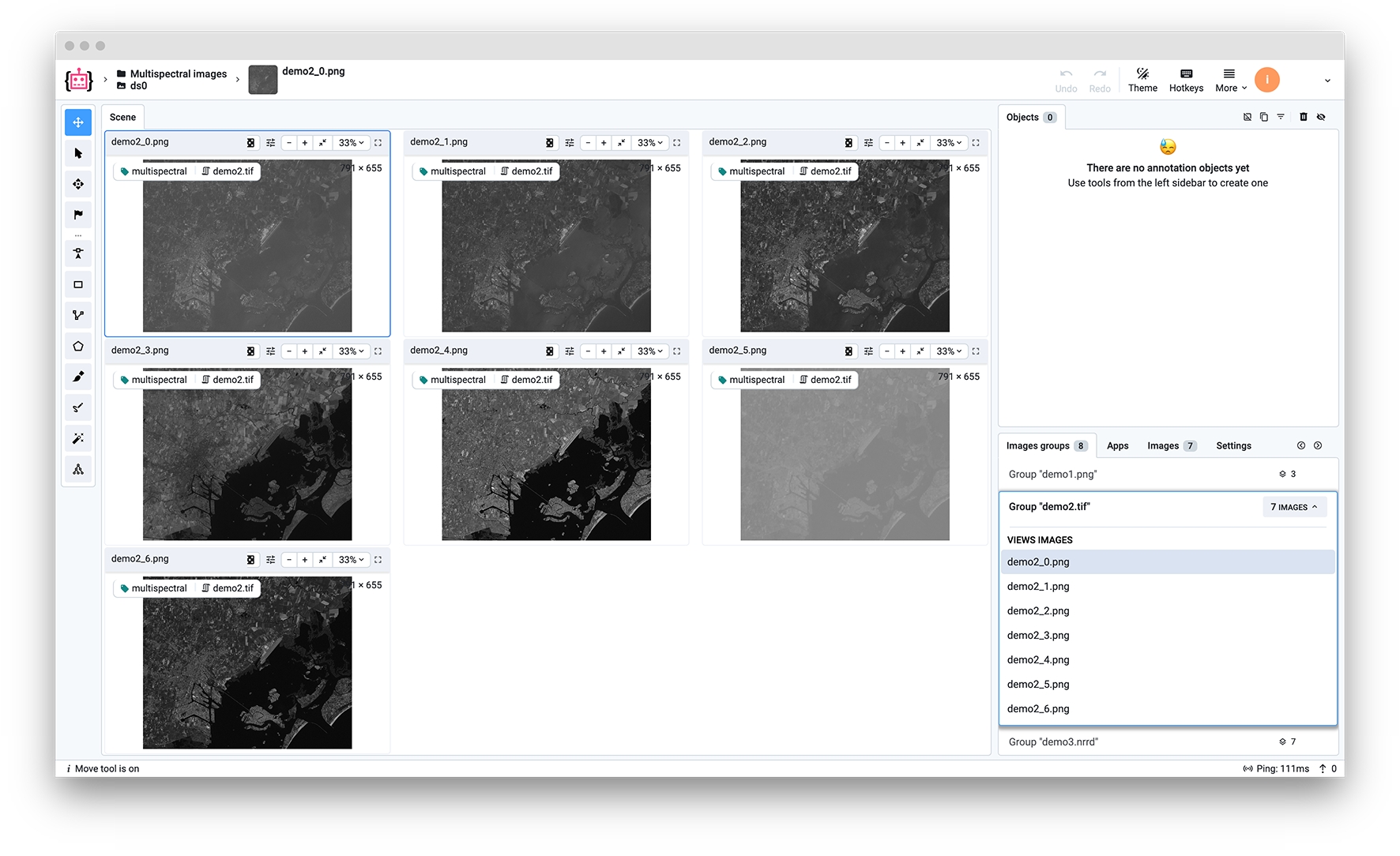
Upload nrrd image as channels
Input: 1 nrrd image.
Output: 7 images in a group with the name demo3.nrrd in Supervisely.\
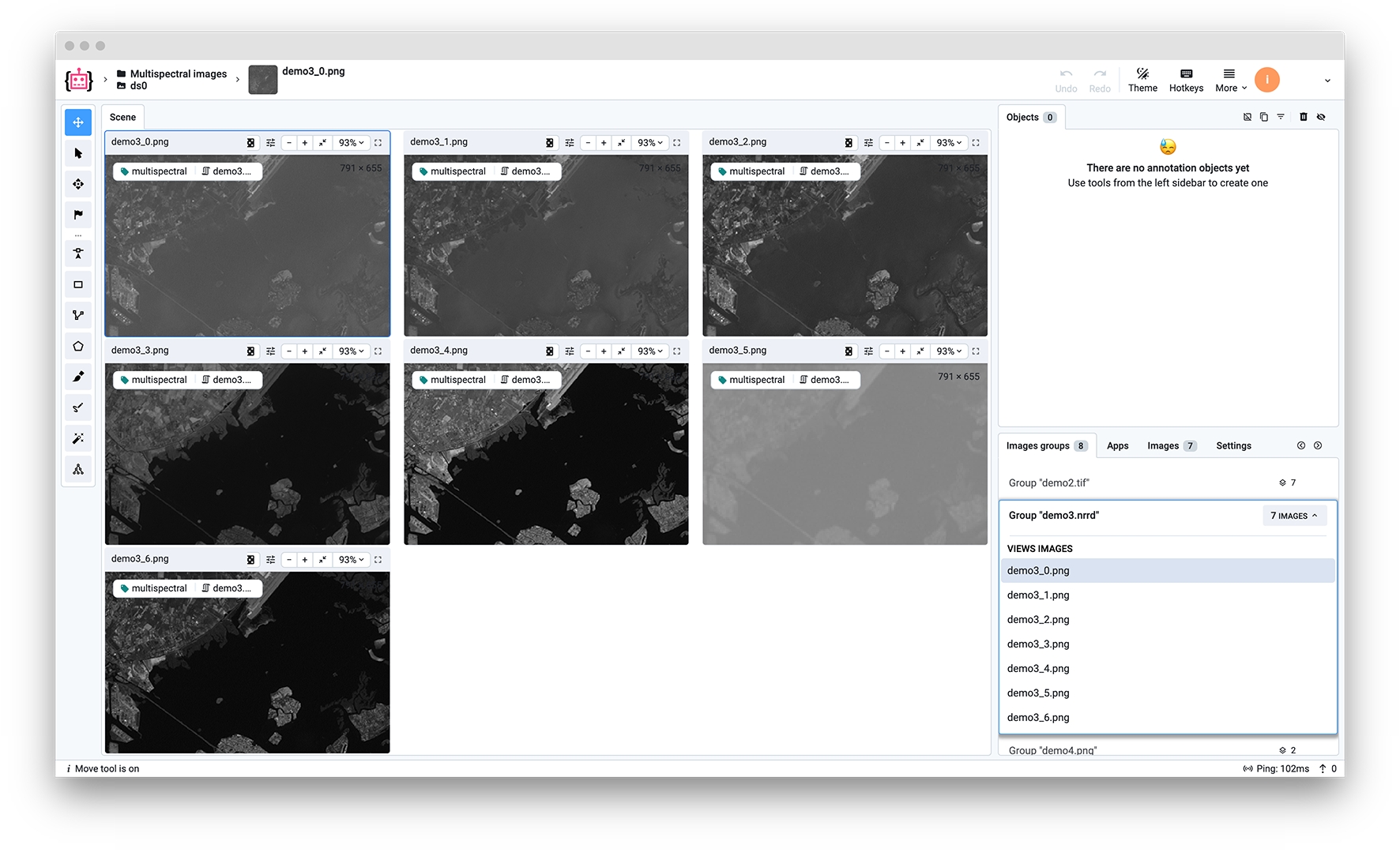
Upload a pair of RGB and thermal images without splitting them into channels
Input: 1 RGB image and 1 thermal image in PNG format.
Output: 2 images in a group with the name demo4.png in Supervisely.\
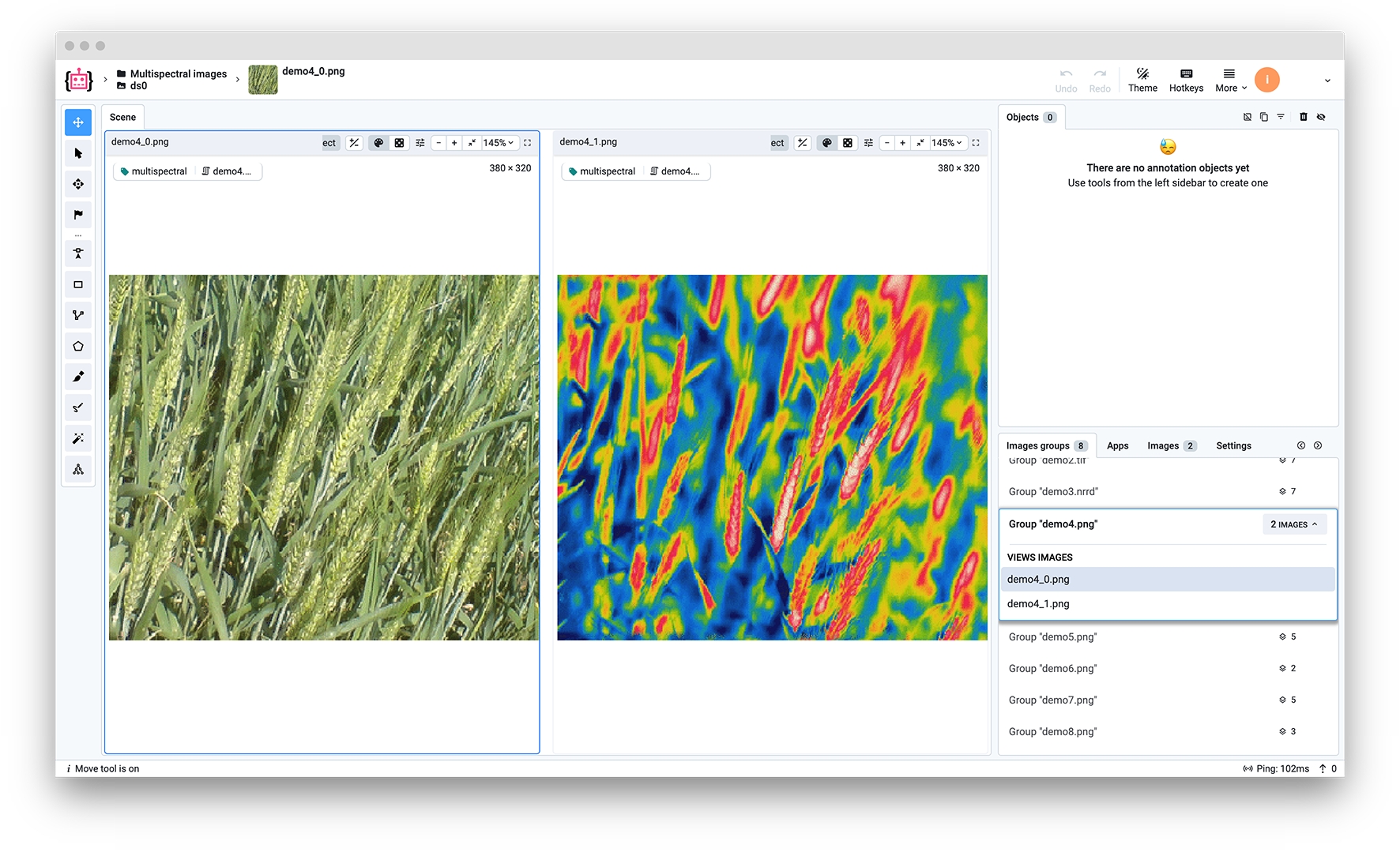
As you can see, in this case, we don't extract any channels since we need to upload only images, not channels. So, we pass the list of image paths to the rgb_images parameter.
Upload RGB image, its channels, and depth image
Input: 1 RGB image and 1 depth image in PNG format.
Output: 5 images in a group with the name demo5.png in Supervisely.\

Here, we uploaded one image both as channels and as an image. So, we pass the list of image paths to the rgb_images parameter and the list of channels to the channels parameter.
Upload grayscale and UV images
Input: 1 grayscale image and 1 UV image in PNG format.
Output: 2 images in a group with the name demo6.png in Supervisely.\
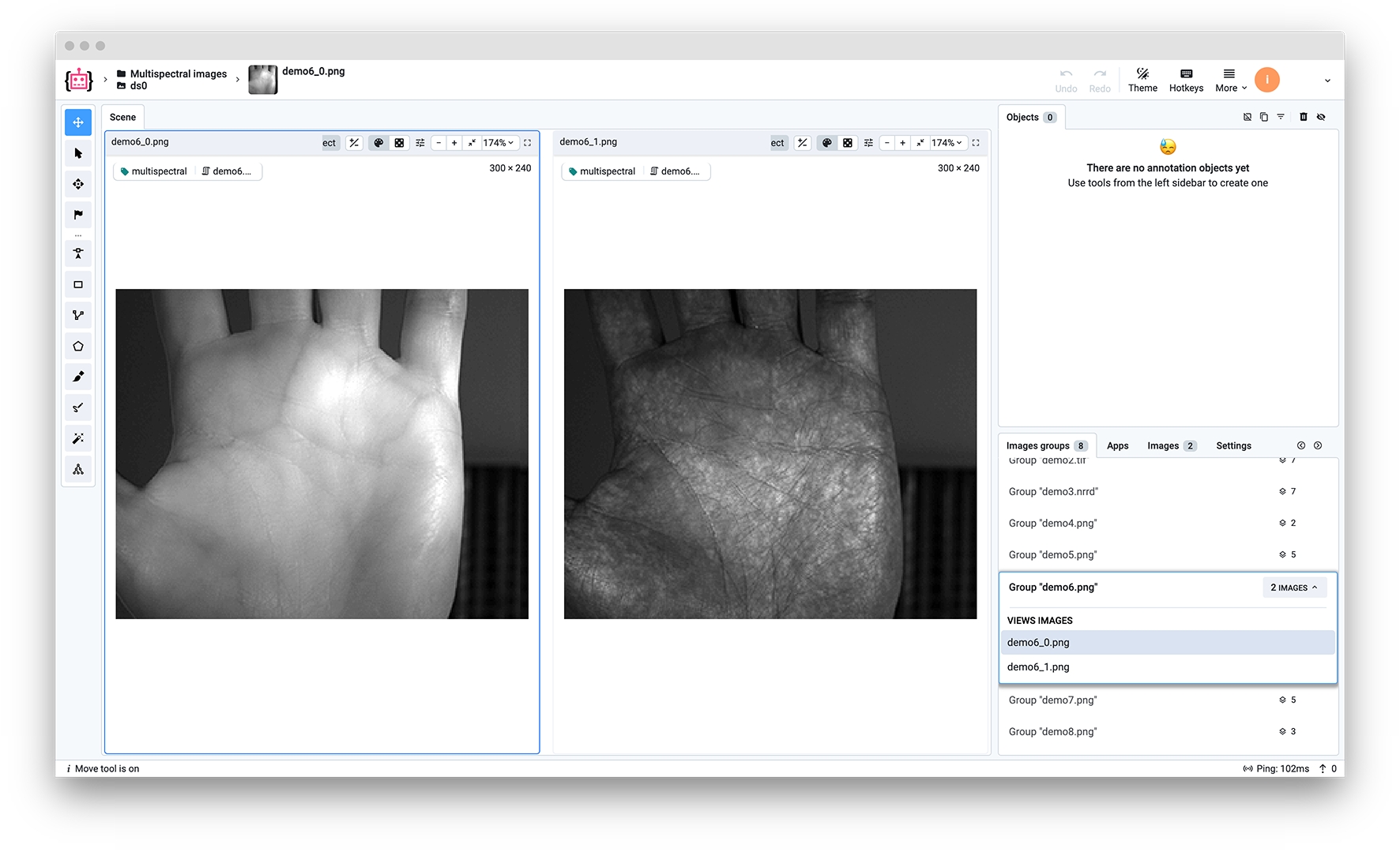
Upload RGB image, thermal image, and channels of thermal image
Input: 1 RGB image and 1 thermal image in PNG format.
Output: 5 images in a group with the name demo7.png in Supervisely.\
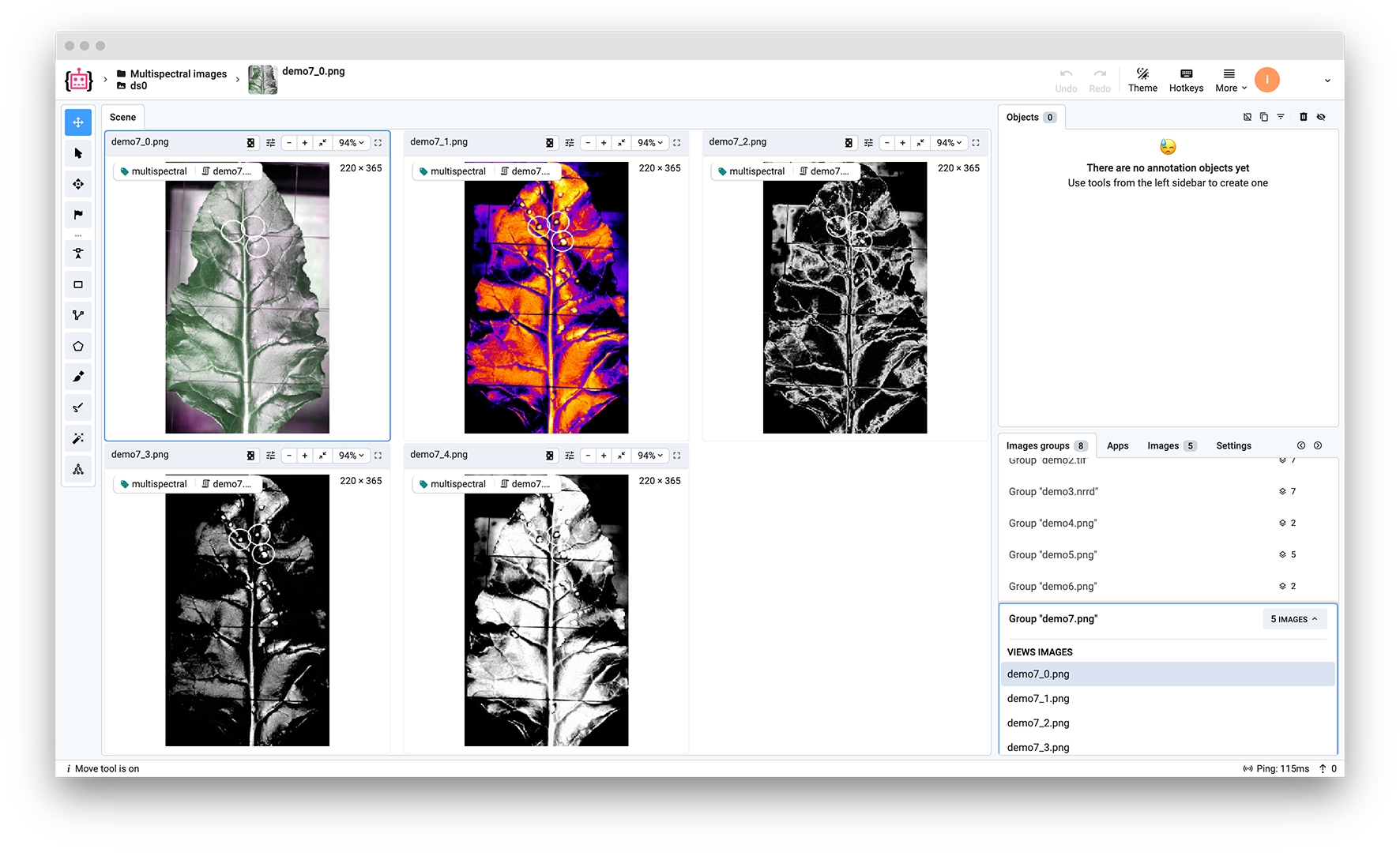
Upload RGB image and two MRI images
Input: 1 RGB image and 2 MRI images in PNG format.
Output: 3 images in a group with the name demo8.png in Supervisely.\
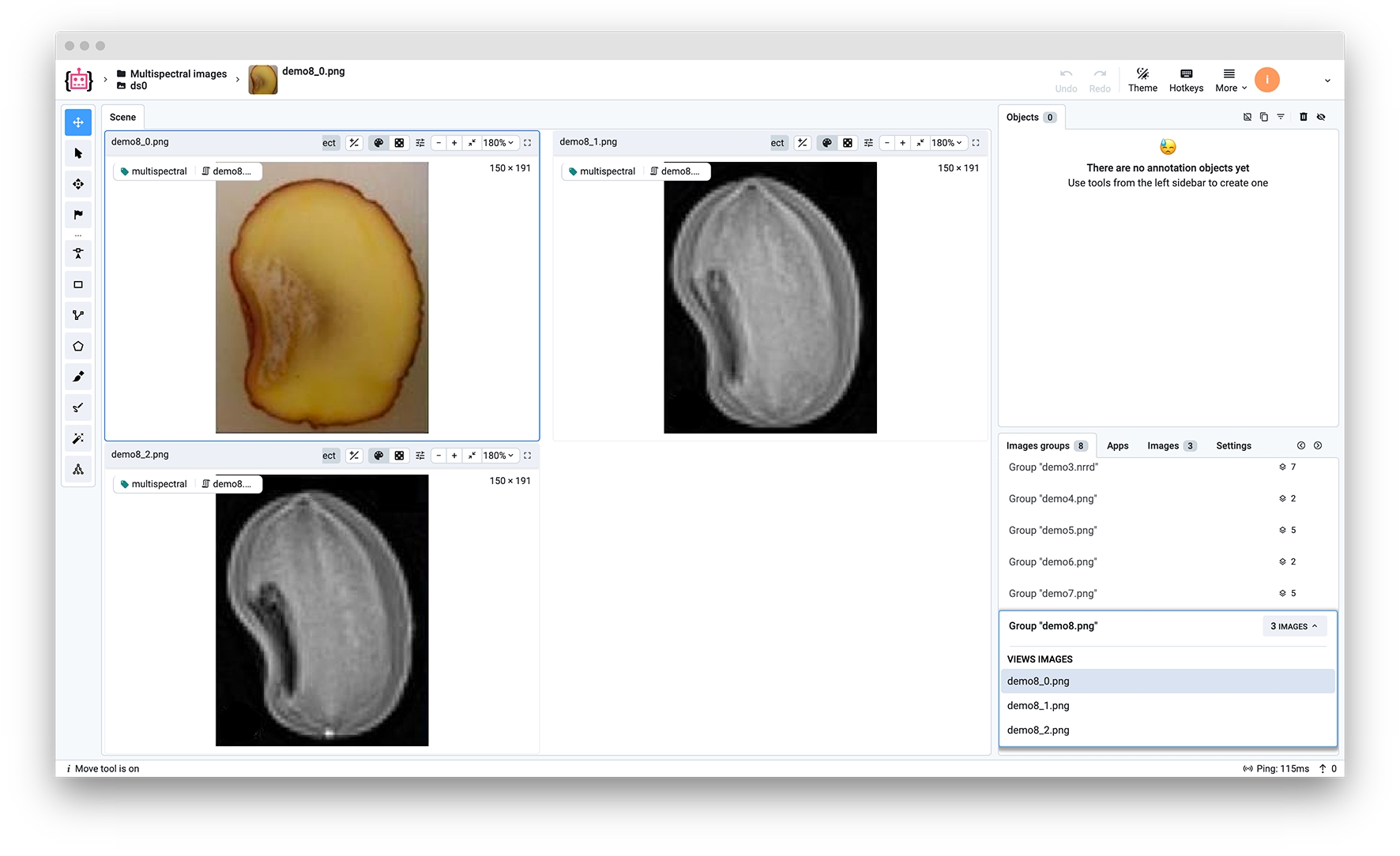
Grouped view in the labeling interface
So now, that we've uploaded all the images, let's take a look at the labeling interface.

As you can see, all the images are grouped by the name of the group, which is the name of the image we passed to the image_name parameter. We can zoom, pan, and label images in one group at the same time. So, whenever you create a label on one image, it will be automatically created on all the other images in the group. You can edit label on another image in the group, and it will be automatically updated on all the other images in the group. Just a reminder: we set the multispectral settings for the project at the beginning of the tutorial with the api.project.set_multispectral_settings method, which enables this grouped view.
Summary
In this tutorial, you learned how to upload multispectral images to Supervisely using Python SDK and get the advantage of the grouped view in the labeling interface, which allows you to synchronize the view, zooming, panning, and labeling of images in one group. Let's recap the steps we did:
Create a new project and dataset.
Set multispectral settings for the project using the
api.project.set_multispectral_settingsmethod.Upload images using the
api.image.upload_multispectralmethod.
And that's it! Now you can upload your multispectral images to Supervisely using Python SDK.
(Advanced) Use supervisely format for multispectral images
From the developer's point of view, the Supervisely annotation JSON format gives you easy access to the necessary parameters while grouping the images. To feel the power of this instrument, let's imagine the situation when you have already downloaded the project and opened the meta.json file:
This is very easy to see, if you want to group your images by the band tag instead of im_id (sync mode on), simply change your projectSettings this way:
Moreover, you can additionally enhance your tags with hotkey, or specify the tag classes. See the explanation of every field here.
To download and upload a project using Supervisely SDK, use the following code:
Last updated
Was this helpful?